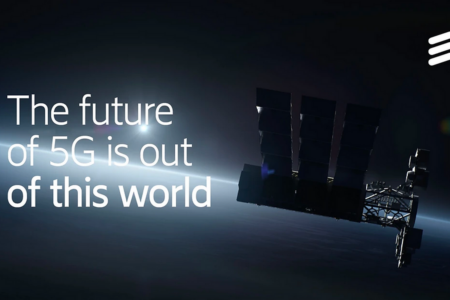
Not Elon Musk and his Starlink alone – on July 11, Ericsson, Qualcomm and Thales announced that they would collaborate on a joint project to extend 5G communications beyond the earth’s surface. The goal of the collaboration is to connect terrestrial 5G networks to orbiting satellites to maximize coverage. We are talking about 5G NTN technology – on the eve of the 3GPP consortium, which develops specifications for mobile telephony, approved a promising new standard.

Satellite communications in conventional mobile phones is not a new idea.
First, it is worth noting that the idea of connecting mobile phones to satellites is not new in itself. Moreover, research and development in this area has been going on for some time. If you remember, Lynk established a two-way communication between a regular mobile phone and a satellite, and in early 2022, one of the Lynk satellites directly connected to thousands of mobile devices. You can also mention Apple, which is still working on providing satellite connectivity for the iPhone.
Ericsson, Qualcomm and Thales partnership details
In a joint press release from Ericsson, Qualcomm and Thales, it is noted that in theory, NTN 5G networks can help provide full global 5G coverage, including hard-to-reach and remote areas in the seas, oceans and other places that are not currently served by terrestrial networks.
Such rich connectivity will accelerate the development of roaming services for 5G smartphone subscribers, as well as provide global connectivity for 5G use in transportation, energy and healthcare.
The space network can also be used as a back-up link for terrestrial networks in the event of major outages or disasters.”
At the same time, it is government communications that are considered as the main scenario for using this technology. That is, if, finally, commercial 5G NTN networks appear, they will be focused not on ordinary consumers, but on government organizations and the corporate segment.
All three companies have previously conducted separate detailed studies, which included numerous examinations of individual aspects and modeling. And now the parties are ready to move on to the next stage – the actual testing focused on the use of smartphones and testing the viability of 5G non-terrestrial networks (5G NTN).
What is the testing program
The program will test various technological components necessary for the operation of 5G NTN networks, including a 5G smartphone, the required satellite payload, and 5G ground stations.
This work will also confirm that 5G NTN support is possible in the current smartphone form factor, allowing future models to receive satellite connectivity. Initial testing will take place in France, where the backbone of the European space industry is concentrated. To do this, they will build a special artificial environment that will simulate space conditions. Thus, they want to measure the propagation of 5G radio and the time delays between an equipped satellite in orbit and the connection of a 5G smartphone to a 5G radio access network in different places on the surface of the Earth.
Ericsson plans to test a modified 5G virtual RAN (vRAN) stack capable of handling radio wave propagation (radio wave propagation in space is the phenomenon of electromagnetic wave energy transfer in the radio frequency range) through fast-moving LEO satellites. Thales will be responsible for the 5G hardware that will run on the LEO satellites, and Qualcomm Technologies (the largest supplier of chips that enable smartphone connectivity to cellular networks) will provide test phones that will confirm that future 5G smartphones will support the 5G NTN standard.
It would seem, what does Elon Musk’s Starlink have to do with it?
Interestingly, the resurgence of interest in 5G NTN comes amid a conflict between SpaceX and Dish – SpaceX claims that Dish’s plans to provide 5G services at 12 GHz will “make Starlink unusable” and Dish accuses SpaceX of lying.
Starlink Internet is now available on yachts for $5,000 per month (equipment costs an additional $10,000)




